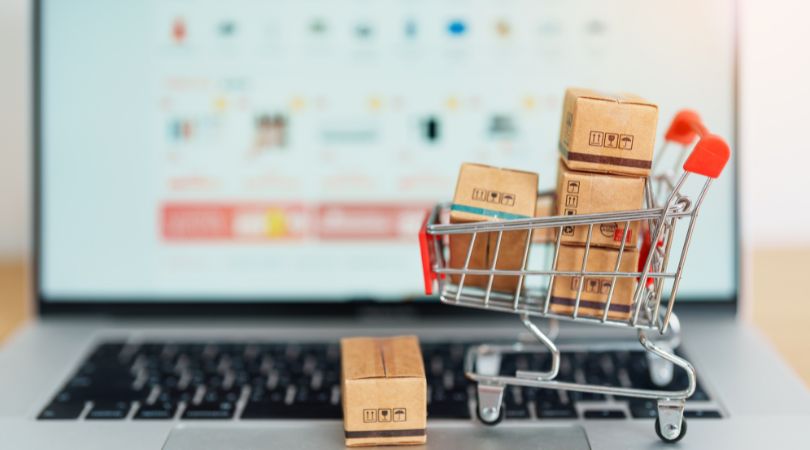Online Marketplace Shopping: How to Avoid Fake Sellers and Risky Payments?
E-commerce continues to grow in popularity due to its many advantages, but it also comes with risks. On platforms such as marketplaces, staying vigilant is essential to avoid falling into the trap of scams and fraud. So how can you navigate this world while ensuring the security of your purchases? That’s precisely what we’ll explore together.

Identifying the Signs of a Potential Scam
Detecting a potential fake seller starts with carefully analyzing subtle warning signs. Fraudsters often hide behind deceptive profiles, embedding too-good-to-be-true deals in their listings. Pay close attention to unrealistically low prices and vague descriptions.
One of the first reflexes to adopt is to verify the seller's profile. Checking past reviews and feedback can provide valuable insights into a seller’s credibility. A seller with few or no reviews could be a red flag. You can learn more about the tactics used by fraudsters by visiting this in-depth guide on banking scams.
The Importance of Evaluating Sellers and Buyers
Most marketplaces include a rating system based on previous transactions, making it easier to assess both sellers and buyers. High ratings and numerous positive reviews are reassuring indicators. Conversely, a lack of reviews or frequent negative feedback warrants caution.
However, some dishonest sellers attempt to manipulate their profiles with fake reviews. That’s why you should not rely solely on ratings but also read a few customer comments to spot suspicious patterns that might indicate organized fraud.
Using Secure Payment Methods for Transactions
A secure transaction should always go through reliable payment channels. Secure payment methods like PayPal or Stripe offer a protected interface, significantly reducing exposure to fraud. Avoid direct bank transfers or cash payments, as they are difficult—if not impossible—to recover in case of a scam.
For added security, consider using prepaid cards. These provide an effective barrier against irreversible transactions with potential scammers. Learn how prepaid cards can revolutionize online transactions and enhance security.
Strong Authentication: A Critical Security Measure
Many platforms implement strong authentication to enhance account security. This extra layer of protection requires not just a password but also a second verification factor, making it much harder for hackers to access your account.
Common authentication methods include:
- A one-time code sent via SMS
- App-based authentication codes
- Biometric identification (fingerprint or facial recognition)
Safe Practices for Meeting Sellers in Person
When a purchase involves a face-to-face exchange, certain precautions should be taken. Choose public, well-populated areas and meet during the day whenever possible. Bringing a companion can further reduce risks associated with meeting strangers.
Be wary of sellers who refuse to meet in person or propose unusual meeting conditions. Maintaining clear and transparent communication is crucial to ensure the transaction goes smoothly.
Staying Alert to Deals That Seem Too Good to Be True
Scammers often lure buyers with unbelievable discounts or rare products at bargain prices. These tactics are designed to attract less cautious shoppers. Before making a purchase, take the time to compare similar offers across multiple platforms and research the product thoroughly.
By staying critical and vigilant, you can spot red flags that may reveal fraudulent schemes. Even basic online research skills can make a huge difference in avoiding scams.
Tips for Secure Online Payments
Before finalizing a transaction, make sure all security conditions are met. Check whether the marketplace offers purchase protection programs. Some platforms provide guarantees, ensuring a refund if a dispute with the seller cannot be resolved.
Use reputable payment providers with a strong security reputation. Another option is temporary virtual cards, generated specifically for each purchase, which significantly reduce the risk of data theft.
Preventing Risky Payments
Cybercriminals constantly develop new fraud techniques to target unsuspecting buyers. However, simple precautions can drastically reduce your risk of being scammed:
- Never share your personal or financial information via direct messages, no matter the circumstance.
- Regularly check your bank statements for suspicious activity and act immediately if you notice any anomalies.
- Report any suspicious transactions to your bank as soon as possible to trigger their security protocols.
Strategic Use of Prepaid Cards
Prepaid cards are an excellent way to make online purchases without directly exposing your bank accounts. They operate independently and only allow transactions up to the loaded balance. This means that even if fraud occurs, only the funds available on the card would be at risk.
Although this method may seem restrictive, it offers peace of mind, ensuring that your primary financial assets remain completely secure. If you frequently shop online, consider integrating prepaid cards into your payment strategy.
The Strengths and Limitations of Built-In Marketplace Security
Most marketplaces implement their own security measures to enhance transaction safety. While effective, these systems have limitations. Always rely on additional security practices, such as encryption tools, but never assume that platform security alone is foolproof.
Staying informed about the latest fraud techniques and adapting your purchasing habits accordingly is key to securing your online shopping experience. Combining technology-driven solutions with personal vigilance creates the perfect defense against scams in today’s digital marketplace ecosystem.
Why Using a Prepaid Card for Online Transactions Is Safer Than a Traditional Bank Card?
Online Games and Mobile Apps: How to Avoid Hidden Charges?
Similar articles

Family Allowance Age Limit for Two Children: The Complete Guide

Why Using a Prepaid Card for Online Transactions Is Safer Than a Traditional Bank Card?
The information provided on this blog is presented for informational purposes only and has no contractual or legal value. Although we strive to ensure the accuracy, completeness and updating of the published content, it may contain errors, omissions or inaccuracies. Carte Veritas and the authors of the articles cannot be held responsible for decisions or actions taken based on the information contained in this blog. Any use of this information is made at your own risk and under your sole responsibility. We encourage you to consult a qualified professional or an expert for any important question or decision relating to the subjects discussed. In addition, the information presented on this site may be modified or updated without notice. By visiting this blog, you agree that Carte Veritas and its partners are released from any liability concerning losses, direct or indirect damages, or consequences arising from the use of the contents of this site, whether they are linked to errors, omissions or the interpretation of the information published.
